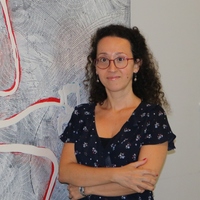Merih Erol
Ozyegin University, Humanities and Social Sciences, Faculty Member
- I am a historian of the late Ottoman Empire. My research interests include the cultural history of the late Ottoman p... moreI am a historian of the late Ottoman Empire. My research interests include the cultural history of the late Ottoman period, musical identities in the age of nationalisms, history of the Balkans (18th-20th Centuries), American Evangelism in the Ottoman Empire, and more recently Armenian refugees in Greece after the Greek-Turkish war of 1919-1922.edit
Paper title:
From Harpert to Corinth: Tracing Armenians through family history
From Harpert to Corinth: Tracing Armenians through family history
Research Interests:
This article sheds light upon the history of an underresearched group of refugees who settled in Greece in the 1920s. It focuses on Armenians from Anatolia who fled to Greece in 1921–22, during and after the Greek-Turkish War of 1919–22.... more
This article sheds light upon the history of an underresearched group of refugees who
settled in Greece in the 1920s. It focuses on Armenians from Anatolia who fled to Greece
in 1921–22, during and after the Greek-Turkish War of 1919–22. The article examines
how the Greek government and international humanitarian organizations (Near
East Relief, American Red Cross, etc.) approached the Armenian refugees, including
orphans. The study further highlights practices such as transfers of Armenians within
Greece, repatriation programs supported by Greece to send the Armenian refugees to
Soviet Armenia, and citizenship policies regarding them.
settled in Greece in the 1920s. It focuses on Armenians from Anatolia who fled to Greece
in 1921–22, during and after the Greek-Turkish War of 1919–22. The article examines
how the Greek government and international humanitarian organizations (Near
East Relief, American Red Cross, etc.) approached the Armenian refugees, including
orphans. The study further highlights practices such as transfers of Armenians within
Greece, repatriation programs supported by Greece to send the Armenian refugees to
Soviet Armenia, and citizenship policies regarding them.
Research Interests:
Research Interests:
Research Interests:
This article explores the notions of tradition and innovation as perceived and discursively employed by the Stanbulite Greek Orthodox concerning their ritual music in the second half of the nineteenth century. At a more general level,... more
This article explores the notions of tradition and innovation as perceived and discursively employed by the Stanbulite Greek Orthodox concerning their ritual music in the second half of the nineteenth century. At a more general level, focusing on the sacred music of the Greek Orthodox Church in the late nineteenth century, it argues for a blurred boundary between tradition and invention (or innovation). By investigating the discourses of tradition used by the spiritual leaders, musicians, and European musical experts, it tackles the manifestations of ethnic and religious identity in the largest non-Muslim minority group within a multi-ethnic and multi-religious empire. Some of the major issues which concerned the patriarchs, cantors, and the participants of the musical commissions in Istanbul were the amelioration of choral singing, the notation of ecclesiastical chants, and the problems of intonation. This article explores the reformist intentions and acts of the Stanbulite cantors, scholars, and patriarchs, in view of their assertions of their cultural identity, the discourses of the West that they subscribed to, and their individual responses to certain Western European scholars’ convictions on the origins and continuity of the Greek musical tradition. Furthermore, by providing examples from the long history of the Eastern Orthodox Church, the article contributes to our understanding of the processes of the making of myths and traditions in contemporary Greek culture.
Research Interests:
Due to copyright restrictions, the access to the full text of this article is only available via subscription.N/
Research Interests:
that Mitropoulos and Schoenberg exchanged during the years 1945–1951, the death year of Schoenberg. The research efforts of the author bear significant fruits because the reader comes across a wealth of information about musical modernism... more
that Mitropoulos and Schoenberg exchanged during the years 1945–1951, the death year of Schoenberg. The research efforts of the author bear significant fruits because the reader comes across a wealth of information about musical modernism in the United States but it is also revealing in the most clear way, Mitropoulos’s steady, insistent passion (pathos in Greek seems to be a more appropriate word for some reason) for new music to flourish—a passion that actually drove his hand during his compositional years to enrich the Greek soundscape of the 1920s, is revealed in this book. Sakallieros delivers a well-researched, approachable text, in which one can discover a creative facet and a modernist empathy in a great and influential maestro of the twentieth century that probably most do not know. I believe that this book deserves all the attention that it can get.
Research Interests:
ABSTRACT:The topic of this study is the control of urban space in late Ottoman Istanbul, particularly during the reign of Abdülhamid II (1876–1909). Issues of the control and surveillance of public gatherings and popular entertainment are... more
ABSTRACT:The topic of this study is the control of urban space in late Ottoman Istanbul, particularly during the reign of Abdülhamid II (1876–1909). Issues of the control and surveillance of public gatherings and popular entertainment are investigated by focusing on the Greeks of Istanbul, the largest non-Muslim population in the city. The article is based on an investigation of petitions, the Ottoman Police Ministry records and spy reports on various planned and spontaneous, private and public activities, such as charity concerts, theatrical performances, and collective singing in private and public meetings.
Research Interests:
Research Interests:
Research Interests:
Research Interests:
Research Interests:
Research Interests:
Research Interests:
Research Interests:
Research Interests:
Research Interests:
Book review in Middle Eastern Studies
Research Interests:
Book review in Ethnomusicology Forum
Research Interests:
Book review on Greek Orthodox Music
Research Interests:
Book review on Greek Orthodox Music
